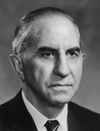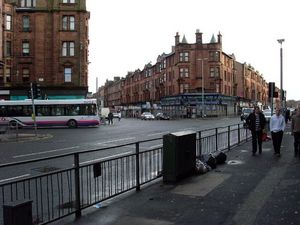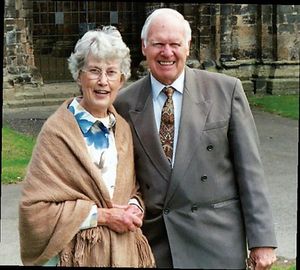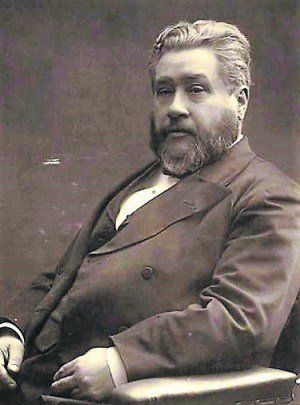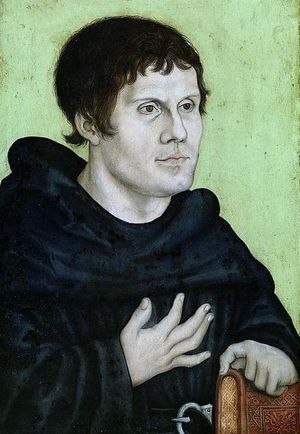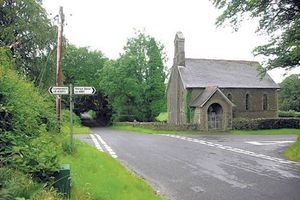This year marks the 50th anniversary of the first English Conference of the Evangelical Movement of Wales. It was held in Sandfields, Aberafan, and Dr Martyn Lloyd-Jones was the main speaker. To mark this key event we reproduce here an edited extract from John J. Murray’s forthcoming book Catch the vision: the roots of the Reformed recovery, to be published by Evangelical Press next month.
When Dr Lloyd-Jones left Wales for London in 1938 it could have been said that ‘Wales’ loss was surely England’s gain’. That was only partly true because the Doctor probably exercised a greater influence on Wales from his vantage point in London than if he had been head of the Theological College in Bala.
Before 1945 the Doctor visited Wales mainly to address large congregations but his ministry took a new form after that date. He became the friend and adviser to a body of young students who were to be the instruments under God in recovering the evangelical faith in the churches of Wales.
A movement of God
Evangelical student witness in Wales began at University College, Cardiff, through the bold initiative of David John Thomas. At first he was unaware of what was happening at other UK universities but, making contact with Dr Rendle Short, he was told what had happened in Cambridge, Oxford and London, where students had broken away from the Student Christian Movement (SCM). Cardiff Students’ Evangelical Union was constituted on 2 February 19231 and Dr Lloyd-Jones, newly inducted as minister at Sandfields, spoke there in 1927. Further unions were formed at Aberystwyth in 1928 and Swansea in 1930.
The evangelical unions struggled in the 1930s but in the 1940s a movement of God among students was to touch the life of Welsh congregations. ‘One of the spearheads of the change was a series of student campaigns that began the very year that things began to look up at Cardiff in 1940’2 – and continued in the Rhondda (1941), Carmarthen (1944) and Llanelli (1945).
Remarkable numbers attended and many conversions took place. At Llanelli where Glyn Owen was one of the speakers, two young students were converted on the Sunday night before the mission began. They were John B. E. Thomas and Hugh Morgan, both of whom became leading figures in the Evangelical Movement of Wales.
On the way home from the mission on the Monday night they witnessed to two girls, Eluned Rees and Mari Williams – who were both converted at the Tuesday night meeting and later became their respective wives!
Turning points
It was not long before North Wales was affected. J. Elwyn Davies was a student at the Bala-Bangor Theological College in Bangor and a prominent member of SCM. Impressed at the Inter Varsity Fellowship campaign at Llanelli in 1945 and at the TSF Conference at Trinity College, Cambridge (where he heard Dr Lloyd-Jones), he came to faith in Christ in 1947 at an SCM Easter retreat.
That same year he attended a World Youth Conference in Oslo and considered abandoning his BD course to do relief work in Germany. At that critical juncture, Owen Parry, a history specialist at Bangor, remarked to him: ‘If Wales does not recover the faith in your generation, many generations could pass by without it’.3
This was a turning point in his life – and also for evangelical testimony in Wales.
Davies began to speak at churches in North Wales and was struck by the number of lonely Christians he came across. He engaged in evangelism in the Bala-Bangor College and conversions took place. A mission to the university was planned for Easter 1948.
To prepare for this mission a ‘retreat’ was convened by Herbert Evans at Dolgellau in January 1948. The speaker was T. Arthur Pritchard. ‘Hard’ time at the start of the retreat gave way to heart searching and the speaker recorded in his diary: ‘It is difficult to find words to express what happened at the end of the meeting. The Holy Spirit came down upon the company in a wonderful way. A new and strange experience, an unforgettable day’. 4
Something new
The spiritual momentum in the student world gave birth to a campaign in Bala at Easter 1948, led by Rev. I. D. E. Thomas accompanied by Arthur Pritchard and Elwyn Davies.
On the third night the Holy Spirit began to work powerfully and the campaign bore lasting fruit.
Dr Lloyd-Jones invited Rev. Thomas to London to hear about the campaign at first hand. ‘He felt at the time that something new was about to happen in the history of religion in Wales’.5
One way in which the work was strengthened was through the launch of a new magazine. At the end of the campaign, Pritchard, Thomas, Herbert Evans and Elwyn Davies approached the owner of Seren Press in Bala and related their vision for an evangelical magazine in the Welsh language.
This was a venture of faith, for they had neither movement nor funds nor patrons behind them. An order was placed for 1500 copies. A small company met in Aberystwyth to discuss the magazine’s content and format. The name finally agreed was Y Cyclhgrawn Efengylaidd (The Evangelical Magazine) which would be produced bi-monthly. The cover displayed a cross (the heart of the gospel) rising out of a Bible (the foundation of true faith).
The first issue appeared in November-December 1948 and included a defining article by the Doctor on ‘The evangelical faith’ together with seven pages devoted to the exciting story of the years 1946-1948. J. Elwyn Davies was appointed secretary. 6
Expository power
A mission was held in Bangor in January 1949 with Dr Lloyd-Jones as preacher. It was rare for the Doctor to lead a university mission but the impact was enormous. An open-air meeting was held in the town square at night, followed by a service in one of the chapels at 11.30pm when Dr Lloyd-Jones gave a message.
Close ties developed between the work of the IVF and the magazine. The link was J. Elwyn Davies, who had hired a tent at the National Eisteddfod in Dolgellau in August 1949 to distribute the new magazine. He became IVF Travelling Secretary and later Secretary of the emerging Evangelical Movement of Wales.
For some years Dr Lloyd-Jones resisted the desire of others to launch a Welsh IVF Conference. But Welsh students went ahead anyway and invited the Doctor to speak at the first of three conferences held in successive years – in 1949 (Borth), 1950 (Newcastle Emlyn) and 1951 (Borth).
This was the first time that students, especially theological students, had been exposed to the expository power of the Doctor. The subject at the first conference was ‘The biblical doctrine of man’. At the second he spoke on the Holy Spirit and at the third on ‘The sovereignty of God’.
For many men this series of conference addresses was the determining influence on their ministry. John B. E. Thomas of Sandfields said he gained more theology from the three conferences than from all his years in theological college.
The sovereignty of God
Two other ministers testify to the impact of these addresses. Derek Swann said, ‘When Dr Lloyd-Jones spoke on the sovereignty of God many of us came to the doctrines of grace for the first time, myself included.
‘He left the doctrine of the sovereignty of God in salvation to his last talk, having in the previous two talks laid down all principles that he would apply in the final talk … I remember it was early in the morning in conversation with Gwyn Walters that the truth of election dawned on me.
‘I was so overcome with the wonder of it all that I had to fight back the tears. For many of us since, election has been an affair of the heart as well as the head. I’ve always been grateful to the Doctor for that. I believe we owe more than we realise for making it heart-warming stuff’.7
Geraint Morgan also comments: ‘On the last evening of the conference I came under a tremendous conviction of sin and joined the queue to see Dr Martyn. I reached him just after midnight. In that conference I yielded gladly my Arminian views and came to rejoice in the doctrines of sovereign grace’.8
Dr Lloyd-Jones’ own views are on record: ‘I felt God’s hand was on these young men. I liked their approach and, having come to see the conference was justified, it was important that it had a Welsh character about it. It also gave the opportunity to stay the influence of higher criticism and evolutionism …
‘Several of the younger men now saw the campaigns and the conference as servants of the church. Under God they were used to produce evangelical ministers and to a lesser extent evangelical churches. The particularly happy thing about the Welsh IVF circles was that it re-oriented back to the church, and men found their fellowship there’.9
Aberystwyth
Following the launch of the Welsh-language magazine in 1948, many of its readers began meeting in ‘evangelical fellowships’. The need was felt for an annual gathering and the first Welsh-language conference was held in Bala in August 1952.
The non-Welsh speakers and English felt they needed a conference too, and one was arranged in 1957 at Sandfields, Aberafan, where John Thomas ministered. Dr Lloyd-Jones’ messages on Ephesians 3:14-19 were emphatically God-centred. After the first conference the venue shifted to Aberystwyth where it has remained.
Attendance grew steadily over the years, eventually needing the university campus with its residential accommodation and Great Hall to accommodate the conference. Geraint Fielder speaks of Aberystwyth in the 1960s as having ‘an unparalleled liveliness of evangelical witness in town and College’ – citing particularly ‘the new and arresting ministry of Geoffrey Thomas at Alfred Place Baptist Church’.
Geoff had been converted at Cardiff University and went on to study at Westminster Theological Seminary, USA – where the life and teaching of Professor John Murray left an indelible impression on his life and future ministry. His work for the Evangelical Movement of Wales, the Banner of Truth Trust and the Puritan and other conferences (on both sides of the Atlantic) has contributed greatly to the recovery of the Reformed vision.
A growing link
Another sequel to the English Conferences was the growing link between Christians in England and Wales. Elizabeth Braund had become interested in Christianity while researching a BBC programme on Mildred Cable. She began reading the New Testament and eventually came to faith in Christ under the ministry of Dr Lloyd-Jones.
While attending the 1957 Conference in Bala she suggested launching an English ‘Evangelical Magazine’ similar to the Welsh one. Discussions took place with J. Elwyn Davies and Dr Lloyd-Jones and a meeting of leaders was held in Bala in April 1958.
Due to heavy commitments the Doctor withdrew from the committee while remaining supportive of the venture. Elizabeth Braund and Elwyn Davies joined with Dr Jim Packer to further the plan, and they became joint editors. The first issue appeared in September 1959.
It was there that Dr Packer’s series on ‘Knowing God’ first appeared, later to become a spiritual classic. The magazine contained a supplement listing ‘Area Meetings for Bible Ministry’ in England and Ireland. The one in my possession (June 1969) lists 37 such meetings in England with only one in Northern Ireland.
References 1-3 and 7-9 are from Geraint D. Fielder’s Excuse me, Mr Davies – Hallelujah! (Bridgend, EP of Wales, 1983), respectively pages 31, 108, 132, 157, 157 (again) and 158.
References 4-6 are from Noel Gibbard’s The first fifty years (Bryntirion, EP of Wales, 2002) respectively pages 21, 27 and 28-30.

